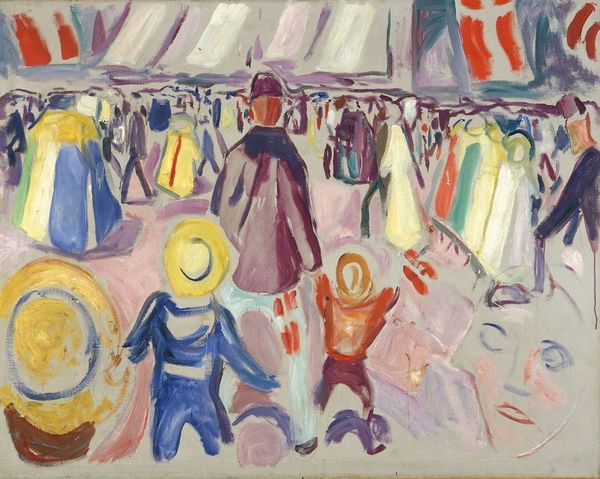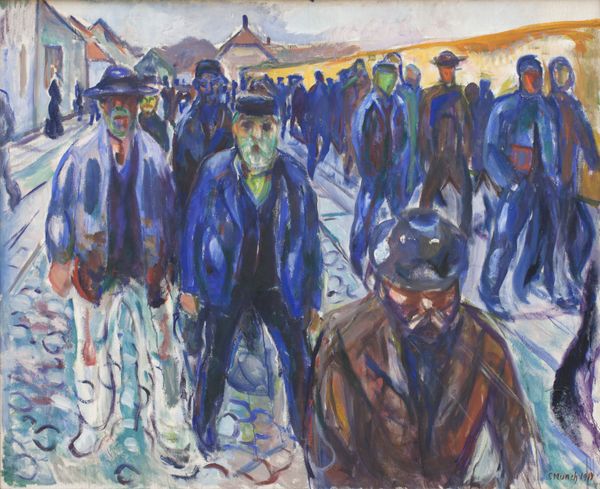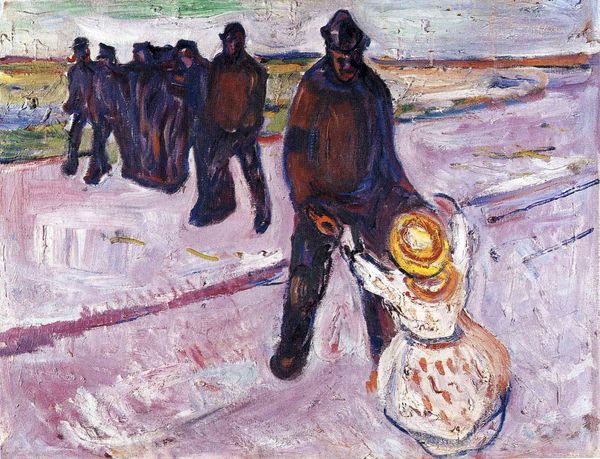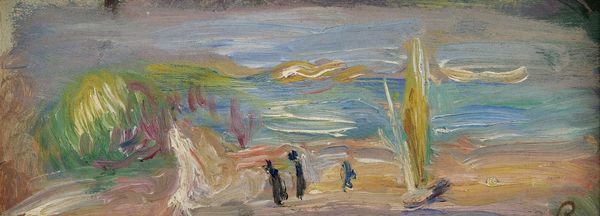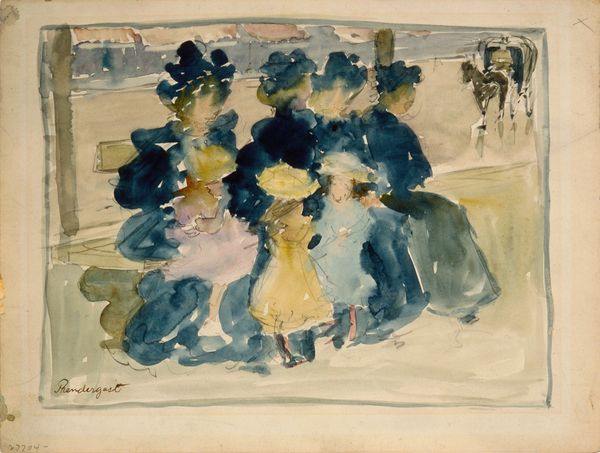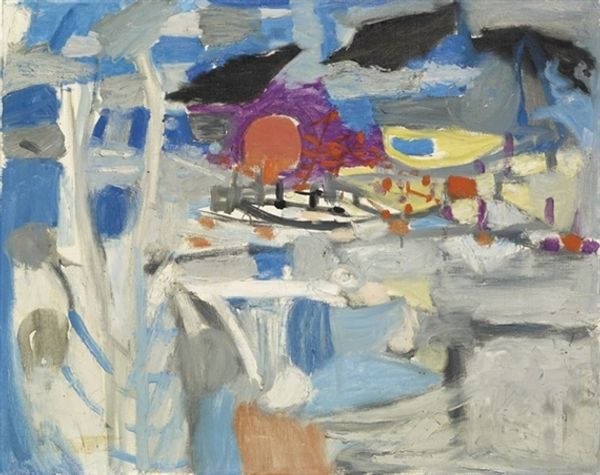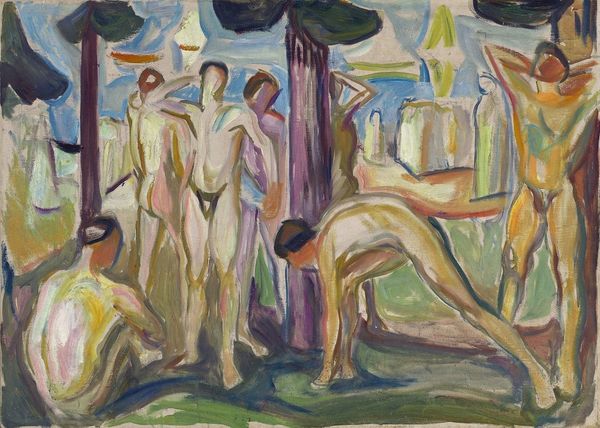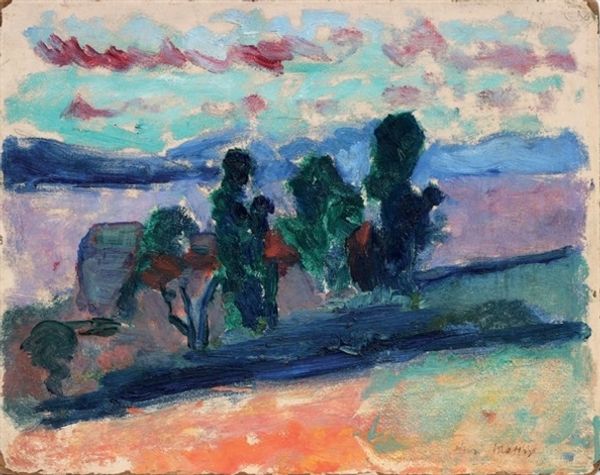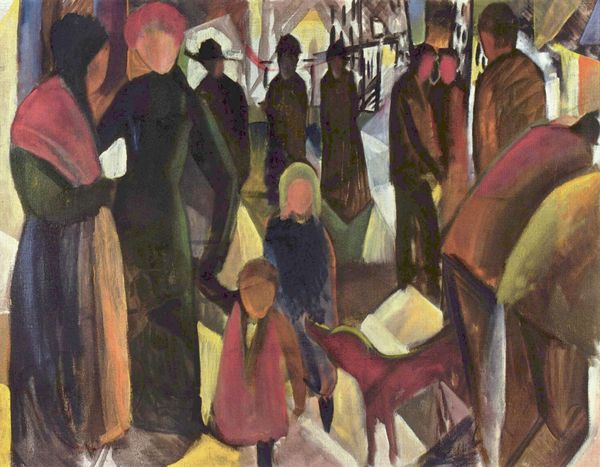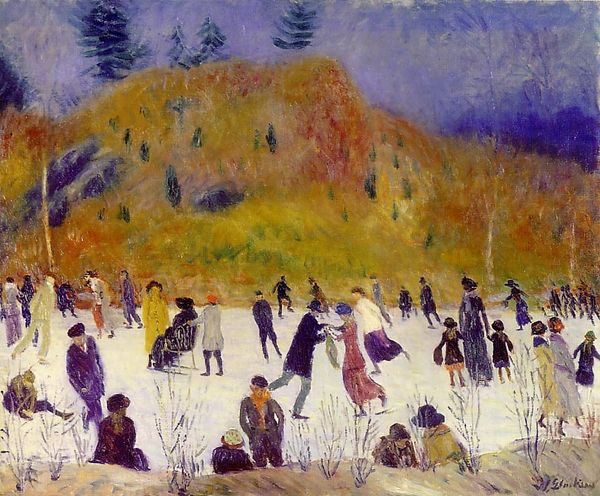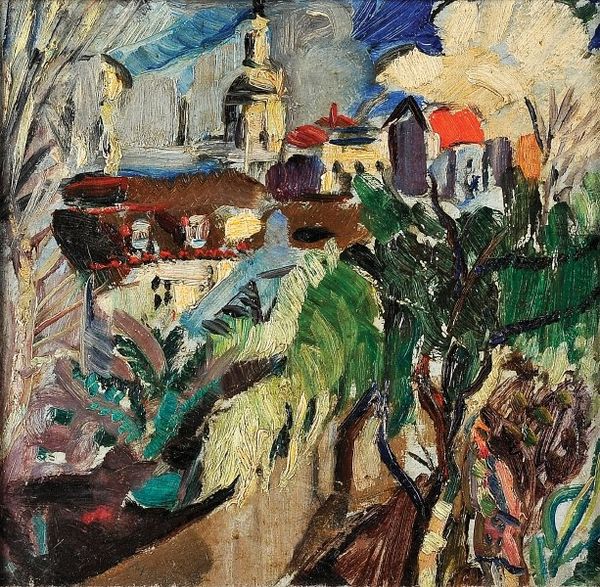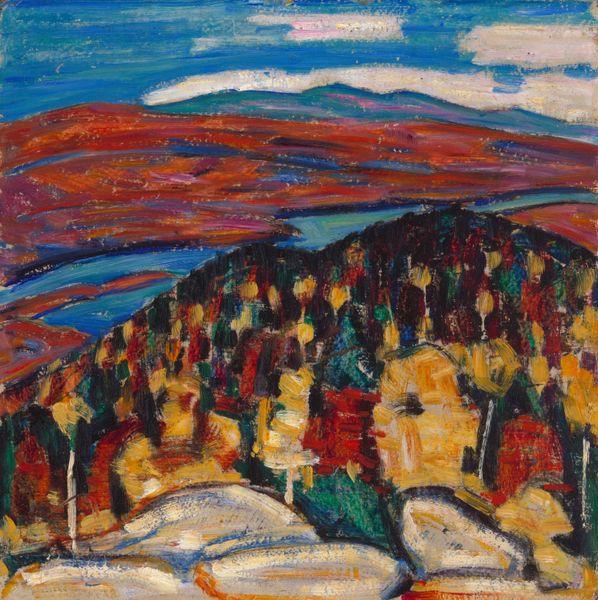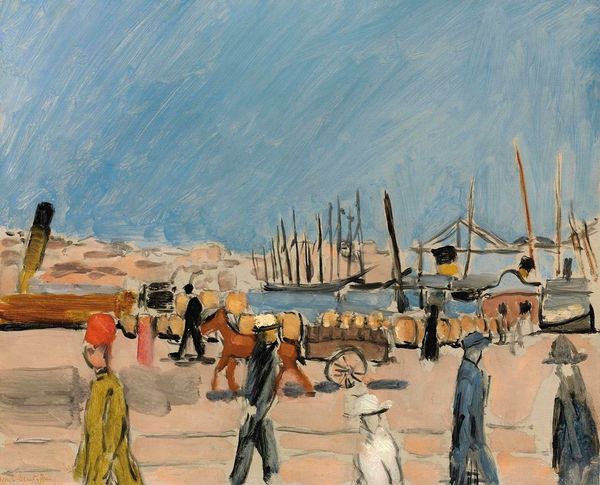
painting, oil-paint
#
figurative
#
narrative-art
#
painting
#
oil-paint
#
landscape
#
figuration
#
oil painting
#
group-portraits
#
expressionism
#
cityscape
#
modernism
Copyright: Public Domain: Artvee
Curator: Edvard Munch, though most known for his deeply internalized paintings about anxiety, also explored images of everyday life. "Workers Returning Home", created in 1920, gives us a glimpse of early 20th century industrial life in Norway. It's an oil painting portraying a mass of people moving away from a factory on the horizon. Editor: My immediate impression is of a muted palette—greys, whites, and muted yellows create a bleak, almost melancholic atmosphere. And there's an interesting compositional choice: the figures dominate the canvas, but they are largely indistinct, anonymized as a collective. Curator: Exactly! Munch was deeply engaged in social issues and workers rights and also sought public art commissions. In this period, Munch had been very vocal in supporting the worker's rights movements across Europe, so depicting a crowd of workers can be viewed through the lens of the cultural impact of industrialization at the time, specifically labor rights. The piece comes in a period between Expressionism and early Modernism. Editor: The painting definitely speaks to the alienation of modern life, with individuals represented as parts of a larger, somewhat dehumanized whole. I'm curious about the factory looming in the background with a heavy sky of grey as opposed to bright hopefulness or triumph from their return. Can we assume Munch did not look so positively towards industry as he is also quite renown for capturing internal despair? Curator: Your instinct is spot on. Despite its subject matter, “Workers Returning Home” avoids glorifying labor or industry. It invites the viewers to recognize these as real people shaped by monumental shifts in social structure. We also note how different it is from, say, socialist realism painting made to glorify the workers, where heroic individuality are put on display instead of an ominous march, but nonetheless made with some parallels for propaganda efforts. Editor: Absolutely, it invites contemplation on the toll industrial society extracts. The recurring image that captures my attention is a factory silhouette on the horizon where each symbol echoes in each worker trudging through. It's an industrial monument made by many but to celebrate only the few, and Munch clearly knew the emotional effect these institutions wrought in the subconscious of its everyday individuals. Curator: Very well said! “Workers Returning Home" serves as a document of its era and also presents Munch’s keen awareness of societal progress on real human life. Editor: It is quite compelling when viewed from a symbolic, almost melancholic standpoint as if history painting was never meant to capture emperors but the somber masses all along.
Comments
No comments
Be the first to comment and join the conversation on the ultimate creative platform.
